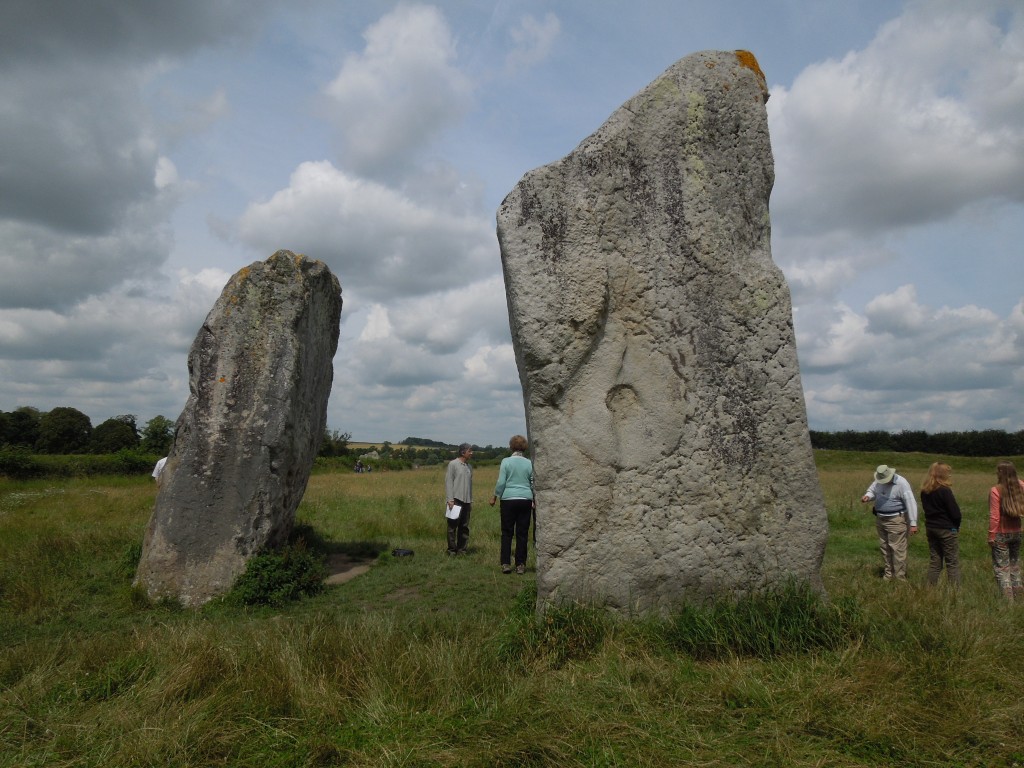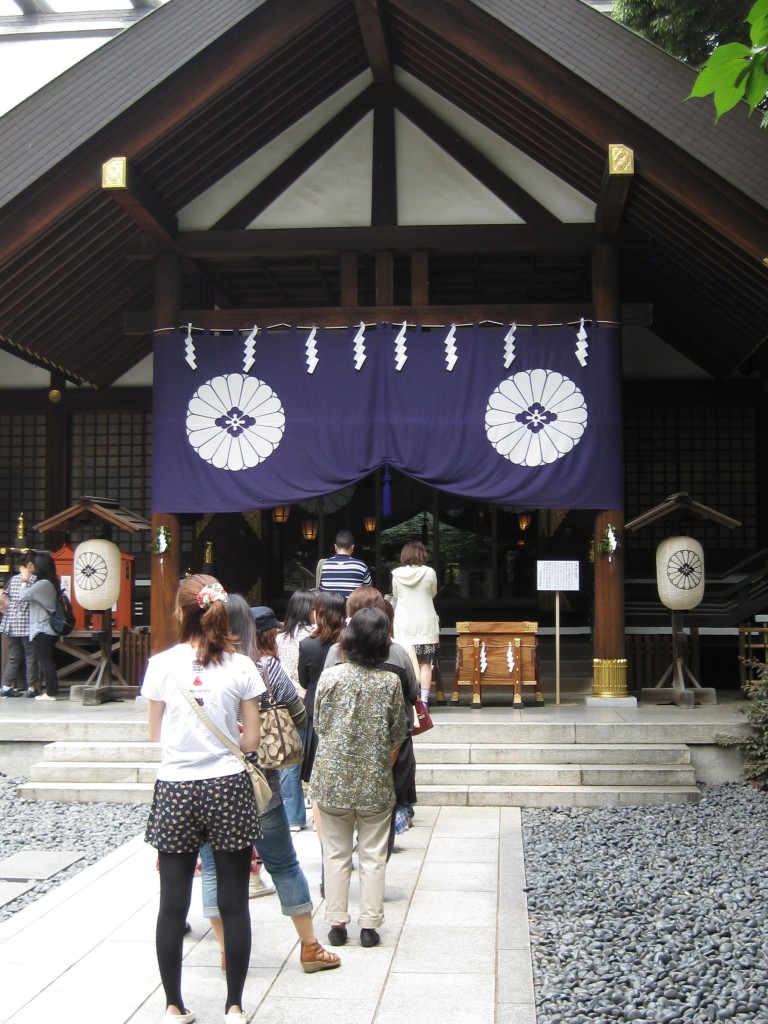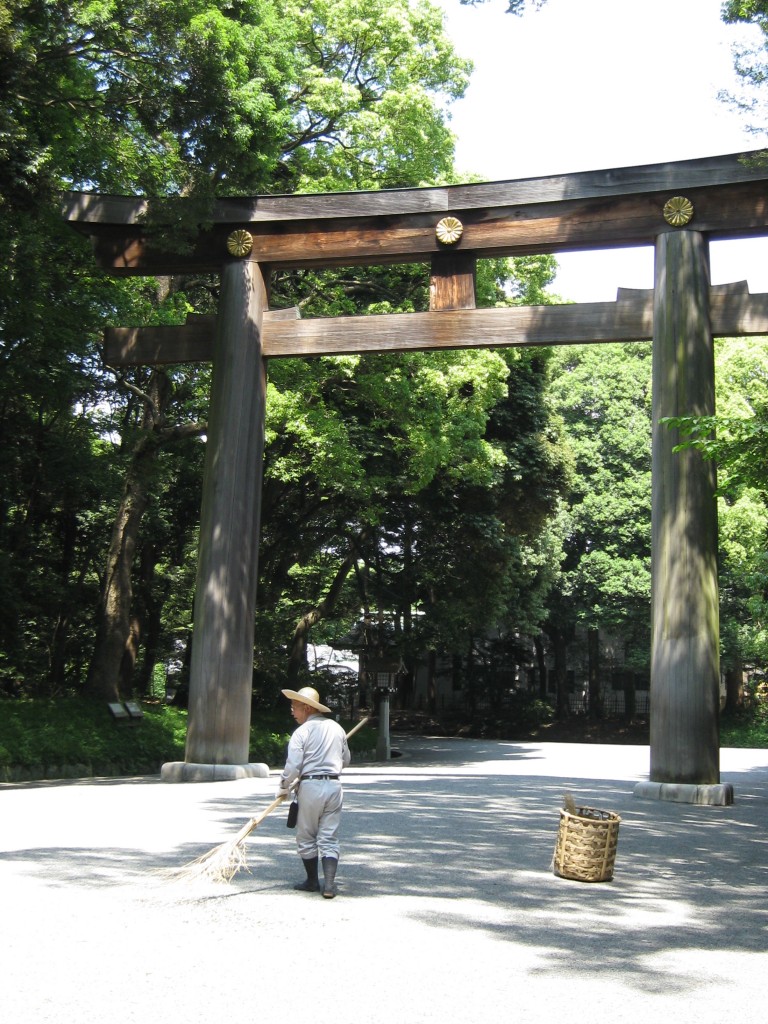
The Avebury Stone Circle, biggest of the roughly 1000 stone circles in the British Isles, has long been recognised for the energy given off by its rocks
The ‘Power Spot’ boom in Japan has been going for some years now in Japan and shows no sign of abating. It involves travel to places with special energy, many of which are Shinto shrines. You’ll often see queues at such places, with groups of young people (mostly female) waiting in line to pray or purchase amulets.
The boom was spared in the 1990s when an (in)famous Uri Geller type figure called Kiyota Masuaki coined the term ‘power spot’. The idea is reminiscent of the craze for geomancy, dowsing and leylines during the 1960s and 1970s in Britain, when countless thousands of young people (including myself) were drawn to ancient sites like Glastonbury and Avebury for their spiritual resonance.
Japan is a deeply conservative nation, and social movements in the West often have at least a thirty-year time lag in taking hold here. Feminism, smoking bans and the pill are just a few examples. New Age ‘power spots’ appear another case in point. An article in Metropolis from 2011 not only introduces the origins and development of the movement, but also highlights some of the most notable power spots in Tokyo.
“””””””””””””””””””””””””””””””””””””””””””””””””””””””””””
Tokyo’s “power spot” boom attracts legions of ladies—and commercial opportunism
By: Rebecca Milner | Mar 31, 2011 | Metropolis

A queue of young ladies lined up at Tokyo Daijingu, said to have special powers for match-making
In the back corner of the garden at Meiji Jingu shrine there is a well. Called Kiyomasa no Ido, it is said to have been dug in the 16th century by the warlord Kato Kiyomasa. “Nobody used to go to that part of the park,” says the middle-aged ticket taker. “Maybe 20 people a day at most.”
All of that changed in December 2009, when tarento and celebrity palm reader Shuhei Shimada told TV viewers that he’d experienced good luck following a visit there. This claim launched a steady stream of pilgrims, and more than a year later, the garden sees thousands of visitors lining up to photograph the small pool of clear water on weekends. Urban legend dictates that using this picture as your cellphone’s wallpaper is good luck.
This is not an isolated incident. It’s part of a larger fascination with “power spots,” areas said to project protective or positive energy. Hundreds of these locations are said to exist, both in Japan and overseas (Hawaii is full of them, naturally). For a complete rundown of the most popular, you only need to pick up Shimada’s Definitive Countrywide Guide to Lucky Power Spots, or any number of similar publications released during the last few years.
“Since Japanese celebs started visiting power spots and experiencing their effect—like something good happening or achieving a goal—the mass media has frequently featured the topic on TV, and in magazines and books,” says Kawasaki-based blogger Kirin Suzuki, explaining how power spots went from niche to mainstream.
In Tokyo, top sites include Tokyo Dai Jingu in Iidabashi, the pond at Inokashira Park and Todoroki Ravine in Setagaya. While “all-purpose” good luck spots like Kiyomasa’s Well attract a broad range of visitors—from young couples to extended families—visitors to Tokyo Dai Jingu are almost entirely female. Deities of creation and marriage are enshrined there, and the shrine itself, which serves as the Tokyo branch of the Grand Shrine in Ise, does a mean business in love amulets. Mt. Fuji—also considered a power spot—saw a record 320,000 climbers last season.
These locales aren’t exactly new; in fact, they are all tied in some way to the ancient practice of Shintoism. What is a relatively new phenomenon is the mainstream interest in traveling to remote corners of Japan in the name of luck and the commercial opportunism that has followed. The term “power spot” itself is attributed to Masuaki Kiyota, a purported psychic who first used the phrase in the 1990s. However, the TV show Aura no Izumi (“Fountains of Aura”), which ran from 2005-2009 on TV Asahi, is largely credited with popularizing the current interest in auras, past lives, the supernatural and power spots.
While Suzuki isn’t into the trend herself, she can see why other women are. “There are many Japanese women who want to get married, but have difficulties in finding a good life partner. Visiting one of the shrines that is famous as a power spot sounds like a good solution,” she says. “I think the power spot boom naturally has more affinity with women. Japanese women are sensitive to ‘what’s new’—the so-called ‘boom,’ and to this effect, they can be influenced by mass media.”
While the fad appears harmless, Mariko Yokokawa, a professor of cultural anthropology at Keio University, is wary of what she perceives as a reliance by Japanese women on fortunetellers and luck. Based on her observations, she feels that “this arises from a sense of powerlessness, an inability to control one’s future. Although this is partly their responsibility, it also comes from a lack of professional opportunity for women, and the strong wish to find a ‘love’ to support their sense of worth.”
ADDRESSES
Inokashira Park Nearest stn: Inokashira Koen (Inokashira line) or Kichijoji (Chuo line)
Kiyomasa’s Well Meiji Jingu, 1-1 Yoyogi-Kamizono-cho, Shibuya-ku. Tel: 03-3379-5511. Open daily 9am-4:30pm; admission ¥500. Nearest stn: Harajuku. www.meijijingu.or.jp
Tokyo Dai Jingu 2-4-1 Fujimi, Chiyoda-ku. Tel: 03-3262-3566. Open daily 8am-7pm. Nearest stn: Iidabashi. www.tokyodaijingu.or.jp/english/index.html
Kirin Suzuki Tokyo Kawaii Etc. http://tokyokawaiietc.com

Meiji Jingu is claimed by many as Tokyo's power spot (no doubt owing to its energising trees and greenery). Those in the know, however, head for the wishing-well.

Leave a Reply